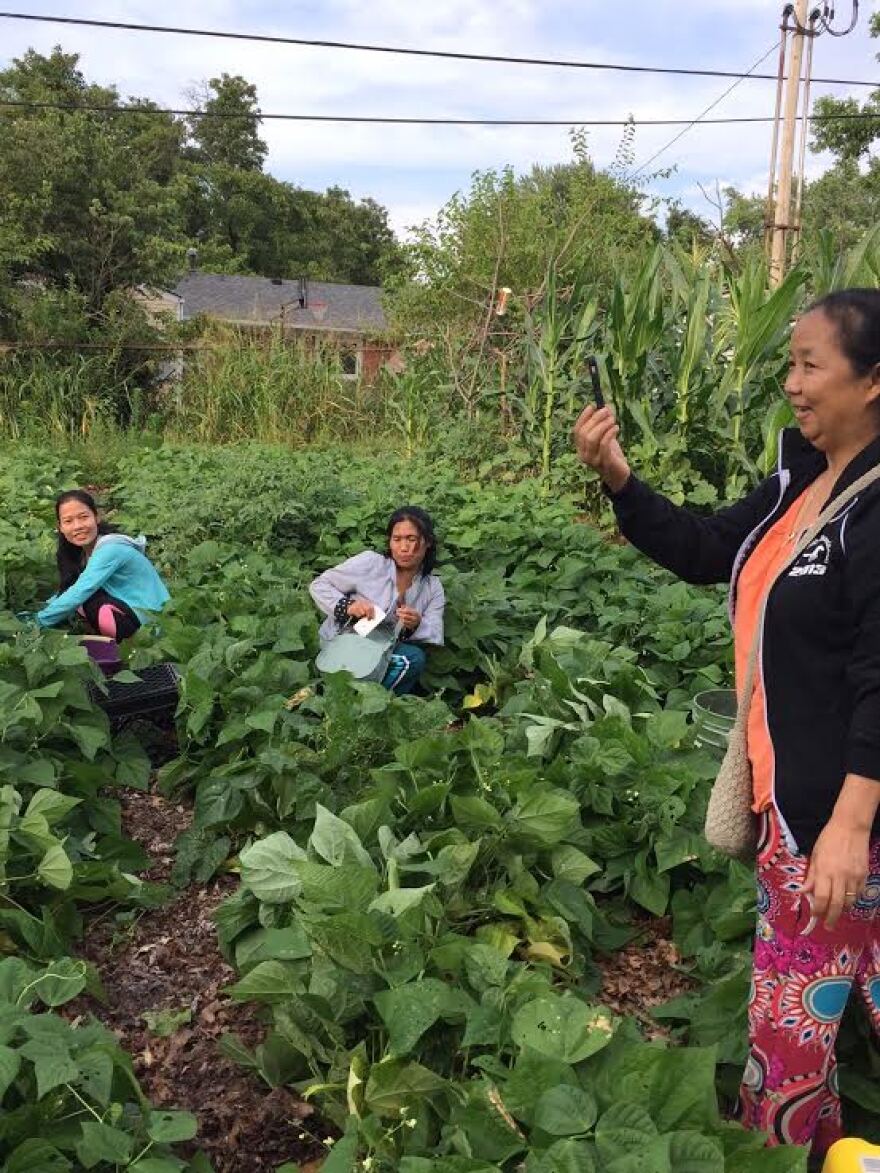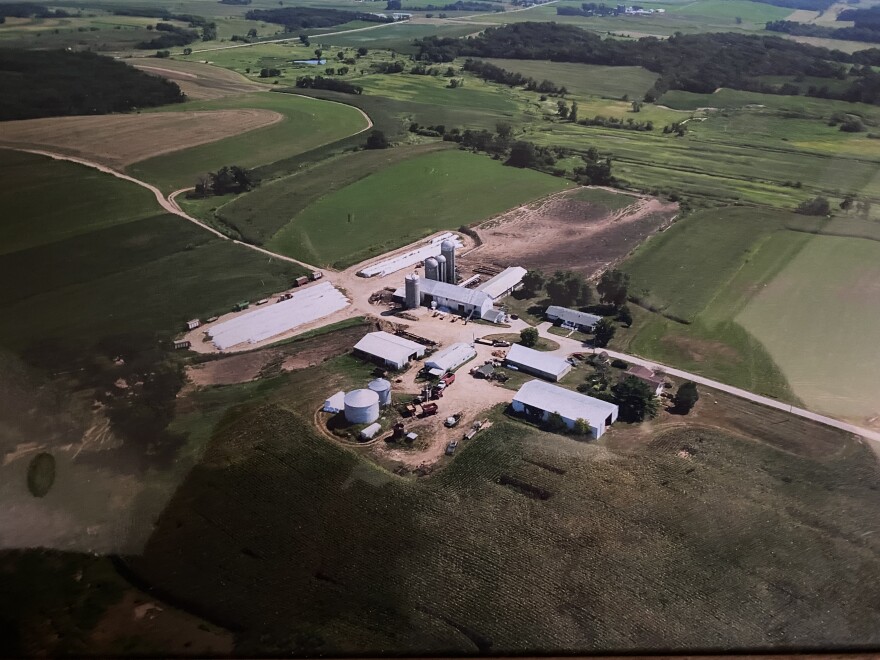If you are listening to our series in order, so far you've heard devastating sound bites from Detroit, you've heard the stories of essential workers in Chicago and you've followed the medical supply chain from Wuhan, China to Minneapolis, MN.
But now I'm going to ask you to get out your road map, and come to Mt. Horeb, Cynthiana and Manitowoc.
In Ohio, Indiana, Kentucky and Wisconsin there are just 10 cities with more than 200,000 people. But there are more than 2,000 towns with populations of less than 15,000, plus acres and acres of unincorporated rural areas.We’ve talked about how data led us to concentrate on the virus’s attack on large cities. But we can’t leave out the economic and cultural impact this pandemic has had on what many think of as the “heartland,” the land where families get together at least once a week, where church-goers sit in the same crowded pew every Sunday and where, during this pandemic, the very traditions that make Midwesterners unique are the same ones making them suffer.
In the first week of March 2020, it was business as usual here; farmers were going over their planting calendars, horses were training at Keeneland, Ohioans were in the national spotlight as the presidential primaries neared, and Wisconsinites were still thawing out from February snowstorms.But by the end of the first week in March, COVID-19 arrived in the Midwest.

Ten days later, all four states began seeing citizens die from COVID-19, and by March 25 governors of all four states had issued some type of stay-at-home order.
Except for outbreaks in meatpacking plants and prisons, infections largely stayed within city limits. The systemic failures that accelerated the spread in cities didn’t correlate with activities of country life. In fact, some rural areas failed to record a single case before August.
But the virus’s concentration in coastal cities and the major metropolitan areas of the Midwest (Chicago, Detroit, Minneapolis) foretold the eventual economic impact of pandemic shutdowns for people like Dave Garfoot, a retired dairy farmer in Mount Horeb, Wisconsin.
From his rural Wisconsin perspective, Garfoot explains: “It is just the huge disruption in the supply chain. Schools and restaurants are shut down. You know, dairy is a perishable product. Farmers were forced to dump their milk in the fields or in ditches. And this is coming off of three to four years of bad prices already. The thing about farming is that it has to go on, day after day. Especially in the spring, things were hard. There were a lot more calls to mental health hotlines.”
Garfoot himself lost about six weeks of revenue as he couldn’t get his beef cattle processed.
Beyond the farming community, something else was happening in rural areas. Cases of COVID-19 were slowly popping up in previously spared small towns.
Jessica Harnishfeger owns a small shop on Main Street in Cynthiana, Indiana, a town of 545 people, where a yard sale is a town-wide event, a “whole thing” with card tables of previously owned housewares and clothes, as well as food, entertainment, contests and parades.

“It’s important to us,” Harnishfeger says. “People come every year to shop for their kids. You can get shoes for $2. You don’t miss it. It was almost canceled this year, but then they decided all the towns around us were having theirs…Poseyville, Owensville, so why shouldn’t we have ours?”
So, in keeping with tradition, the Cynthiana Town Yard Sale happened on July 11. Organizers encouraged social distancing and mask-wearing. But a few days later the local news reported that the yard sale had been a small-town super spreader. The Posey County Health Department traced 18 cases of COVID-19 to the event.
Harnishfeger doesn't believe the yard sale was the source. "I don’t think it was from our yard sale. No one I know got it. I got tested and didn’t have it, and no one that got tested had it. I have my shop here. After all those news reports, I had to shut down my business for a while. No one would come.”In some areas, farmers and shop owners were losing livelihoods even though there hadn’t been a COVID case for miles.
This disconnect led to intense conflict between citizens who wanted to save their business and state leadership who wanted to stop the spread.
Kentucky’s democratic governor Andy Beshear, elected just months before the pandemic, didn’t close the economy so much as slammed it shut while the state still had fewer than 200 confirmed cases. In April, citizens took to social media to lambast what they saw as an attack on their freedom, but by late May, the cries of “Let us Work” left the web and sounded off as chants in Frankfort streets. One morning Beshear was hanged in effigy from a tree on the grounds of the capitol building.
Reverend Erica Whitaker pastors a church in the Buechel Park neighborhood in Louisville, Kentucky. It’s not a rural area, but Buechel Park stands out in Louisville as its own microcosm because of the makeup of its residents; it has a high concentration of refugees and other minority populations. This zip code is also one of the poorest in the city, and it has had one of the highest rates of COVID-19. The early days in Whitaker’s diverse neighborhood were tragic.

“We’ve had 16 church members pass. I’ve done a lot of graveside services. Not only is there risk of COVID, but when you’ve had a church member die and their family has been present with them in those last few days, the risks just increase. We are in the most diverse zip code [with] refugees and immigrants—hard working people with some of the most at-risk jobs [like] sanitation [and] hospital; they are bringing that back into the community.”
Reverend Whitaker says she believes early decisions Beshear made about Kentucky churches may have fueled the vitriol that came later about other freedoms. The Kentucky governor was one of the first in the nation to mandate that churches close in-person services.
“I mean, we are Baptists. We are like...religious liberty! We are very big on that, but we are also humans and followers of Christ, and we don’t want to put people at risk. Part of our DNA as Americans is we don’t like being told what to do, so that was hard coming from a political figure.”
At the end of July, when most COVID restrictions on businesses and community behavior in these Midwestern states were lifted, virus activity started to spike. Community spread of the virus wasn’t just in cities anymore.
In small-town Manitowoc, Wisconsin, Tom Veeser, Chief Nursing Officer of Holy Family Memorial, says the virus is raging, but it isn’t because of multigenerational living, economic inequality or lack of testing. “We know for a fact through our contact tracers that family functions are the number-one way the virus is spreading. More than bars, more than restaurants. It is family functions, when your guard is let down and you take your masks off.”
In Southern Indiana, local officials are calling out weddings and funerals, plus Midwestern cultural staples like bowling leagues, youth sports tournaments and house parties, as the culprits of soaring case numbers.
Kayla Harrison is an ICU nurse in Indianapolis. While her hospital is in the city, critical cases from the country still make their way to her. She says she is hoping people don’t fall prey to “COVID-fatigue” even as the cases in Indiana soar.

"It scares me. I have a couple patients who went back to church and now...[one has] died. He was told he didn’t need to wear a mask, oh it’s fine and now, you know...he died. Protect each other. Choose to wear the mask. Keep being smart. I hope that people will choose one another," she said.
There isn’t a curve in sight on Midwestern COVID graphs, just a straight upward line. What national media might tell you in a few weeks, we are telling you now: The story of COVID-19 and the rural Midwest lifestyle is one of mutual destruction. Traditions like the town-wide yard sale, the Thanksgiving turkey hunt, and Santa stopping by the firehouse are culturally life-sustaining. But to keep these rites and rituals going during a pandemic is life-threatening.

